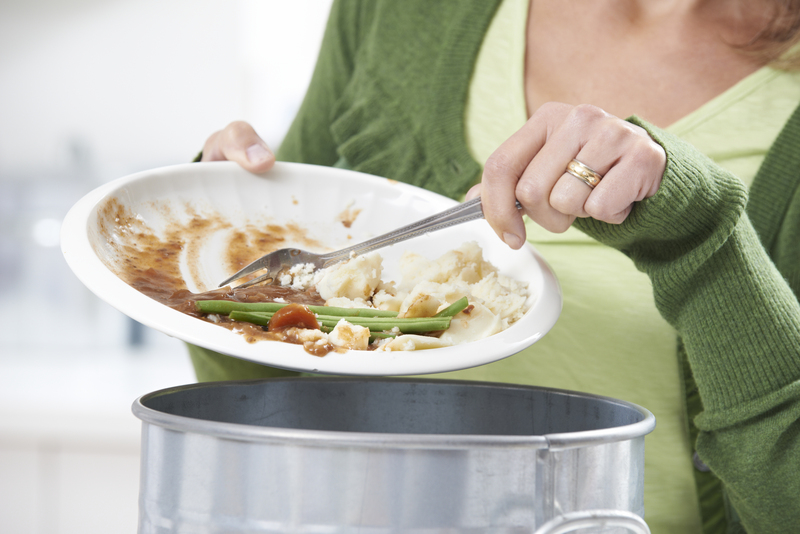The Complete Checklist for PPE Waste Disposal
Personal Protective Equipment (PPE) waste disposal has become a critical aspect of public health and workplace safety, especially following the COVID-19 pandemic. Whether in healthcare, industrial settings, or even household environments, the responsible and correct disposal of PPE ensures environmental safety and reduces the risk of contamination and disease transmission. This comprehensive guide will provide you with a complete checklist for effective PPE waste disposal, discuss best practices, and answer some of the most common questions about PPE waste management.
Understanding PPE Waste
PPE (Personal Protective Equipment) includes items such as face masks, gloves, gowns, goggles, face shields, and shoe covers. When these items are used, especially in healthcare or high-risk environments, they can become contaminated with hazardous biological agents, chemicals, or infectious materials, making proper disposal crucial.
- Masks and Respirators - Single-use surgical masks, N95 respirators, cloth masks.
- Gloves - Nitrile, latex, or vinyl variants often used in medical, industrial, and domestic settings.
- Gowns and Overalls - Protective clothing used particularly in healthcare.
- Eye Protection - Goggles, safety glasses, and face shields.
- Shoe and Head Covers - To prevent contamination spread in clinical and lab environments.
Improper PPE waste disposal can lead to environmental pollution, the spread of infectious diseases, wildlife hazards, and regulatory fines for organizations.

Why Proper PPE Waste Disposal Matters
Proper PPE waste disposal serves multiple purposes:
- Prevents cross-contamination in healthcare and industrial sites
- Protects the environment from harmful chemical and biological waste
- Ensures legal compliance and workplace safety standards
- Reduces the risk of disease transmission in communities
Failing to follow PPE waste disposal best practices can lead to severe legal, financial, and health-related consequences for individuals and organizations.
Types of PPE Waste and Their Disposal Requirements
1. Non-Hazardous PPE Waste
- Examples: Used paper masks, non-contaminated gloves, hair covers from low-risk areas.
- Disposal: Can often be placed in sealed bags and disposed with general trash unless local regulations require otherwise.
2. Infectious or Biohazardous PPE Waste
- Examples: Items contaminated with blood, bodily fluids, or infectious agents.
- Disposal: Must be placed in red or yellow biohazard bags, and managed by licensed waste contractors for incineration or approved treatment.
3. Chemical-Contaminated PPE
- Examples: PPE exposed to hazardous chemicals, pesticides, solvents.
- Disposal: Treated as hazardous waste; should be managed according to chemical waste guidelines and not disposed in regular bins.
4. Radioactive PPE Waste
- Examples: PPE used in radiological labs or nuclear facilities.
- Disposal: Requires compliance with nuclear regulatory authority and specialized containment and management procedures.
PPE Waste Disposal Checklist
Here is the ultimate PPE waste disposal checklist to help you remain compliant and environmentally responsible:
-
Identification and Segregation
- Identify contaminated versus non-contaminated PPE.
- Segregate infectious, chemical, and radioactive PPE waste at the point of origin.
-
Use Appropriate Waste Containers
- Use color-coded bags (red/yellow for infectious, blue for chemical, specific for radioactive).
- Ensure all waste containers are labeled and leak-proof.
-
Secure PPE Waste
- Seal all bags securely before moving.
- Do not overfill waste bins to avoid accidental spills.
-
Safe Transportation
- Transport waste in covered trolleys or carts to avoid exposure.
- Minimize handling and transit time within the facility.
-
Temporary Storage
- Store PPE waste in designated waste holding areas.
- Do not mix with general or recyclable trash.
-
Final Disposal
- Infectious PPE waste: Incinerate in certified treatment plants.
- Chemical PPE waste: Dispose of through hazardous waste services.
- Radioactive PPE waste: Handle as per national regulatory guidelines.
- Non-hazardous PPE waste: Allow for landfill or energy recovery methods.
-
Documentation and Record-Keeping
- Maintain logs of waste collection, type, quantity, and disposal date.
- Obtain and retain waste transfer documentation from authorized handlers.
-
Compliance Review
- Regularly audit disposal practices to ensure regulatory compliance.
- Update protocols in line with new legislation or guidelines.
Best Practices for PPE Waste Disposal
Train Staff Regularly
- Provide ongoing education on the latest PPE waste disposal protocols.
- Use visual cues such as posters and instructional videos in the workplace.
Minimize PPE Consumption
- Choose reusable PPE when safe and possible (e.g., washable gowns, face shields).
- Implement controls to prevent unnecessary use and waste.
Encourage Responsible Usage
- Dispose of single-use PPE immediately after use in the correct bins.
- Do not leave used items on work surfaces or in public areas.
Use Licensed Waste Handlers
- Always work with certified waste disposal companies for hazardous PPE waste.
- Request proof of correct processing (incineration, neutralization, etc.).
Comply with Regulations
- Stay updated with local, state, and national waste disposal mandates.
- Consult regulatory bodies (OSHA, CDC, EPA) for latest guidelines.
Tips for Domestic PPE Waste Disposal
The surge in household PPE usage--especially face masks and gloves--necessitates individual responsibility for safe PPE disposal at home.
- Do not recycle PPE: Masks, gloves, and similar items should never be placed in recycling bins.
- Bag PPE waste securely: Place all used PPE in a plastic bag, tie tightly, and dispose in general household trash.
- Wash hands after disposal: Always wash or sanitize your hands after handling or disposing of used PPE.
- Consider community collection programs: Some areas have PPE-only collection bins--use these where available.
Environmental Impact of Inadequate PPE Waste Management
*Irresponsible PPE waste disposal can pollute waterways, harm wildlife, and contribute to microplastic contamination.* Reports have shown that face masks and gloves often end up in oceans, threatening marine life that may mistake PPE for food or become entangled.
Besides biological hazards, certain PPE (such as those contaminated with hazardous chemicals) can leach toxins into soil and groundwater, posing long-term ecological and human health risks.
Regulations and Compliance
PPE waste disposal is governed by various local, national, and international regulations. Organizations must review and comply with:
- Occupational Safety and Health Administration (OSHA) - United States guidelines on workplace PPE disposal.
- Environmental Protection Agency (EPA) - Mandates on hazardous and infectious waste management.
- International Standards (ISO) - Relating to health, safety, and environmental management.
- Local public health departments - Regional requirements for collection, treatment, and reporting.
PPE Waste Disposal in the Healthcare Sector
The volume and hazard associated with PPE waste in healthcare is notably higher. Hospitals, clinics, dental offices, and laboratories must implement strict PPE disposal protocols to eliminate cross-infection risks and comply with regulatory frameworks.
Healthcare PPE Waste Disposal Best Practices:
- Use double-bagging for all infectious waste.
- Keep waste bins within arm's reach in PPE removal areas.
- Perform regular training and 'drills' on waste management.
- Implement validation checks at every disposal stage.
Frequently Asked Questions
Can PPE be recycled?
No, most single-use PPE--like gloves and masks--cannot be recycled through curbside programs due to their material composition and contamination risk.
How often should PPE waste bins be emptied?
Bins should be emptied at least daily or more frequently in high-traffic areas. Never allow bins to overflow.
What should I do if my local waste collection does not have a PPE waste program?
Double-bag all PPE waste, seal it tightly, and dispose of with general waste unless otherwise directed by local authorities.

Conclusion: Protect Life and the Planet With Proper PPE Waste Disposal
The effective and responsible disposal of PPE waste is not just a matter of regulatory compliance--it is a vital step in protecting individuals, communities, and the environment. By following the complete PPE waste disposal checklist provided here, you can ensure your home or organization is safe, compliant, and environmentally conscious.
- Always segregate PPE waste according to type and risk level.
- Use the correct disposal method for hazardous, infectious, or chemical-contaminated waste.
- Keep documentation and regularly review your disposal protocols.
- Educate staff and family members on the importance of safe PPE waste disposal.
Ultimately, the responsibility lies with each of us to ensure safe and sustainable PPE waste management for a healthier world.